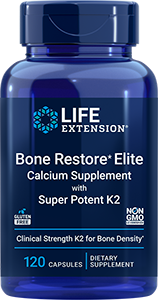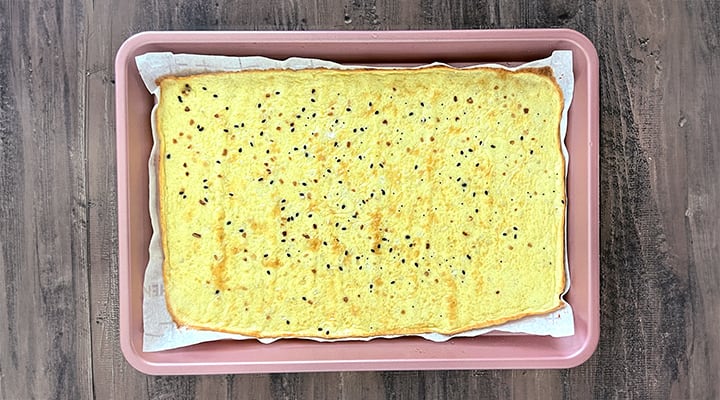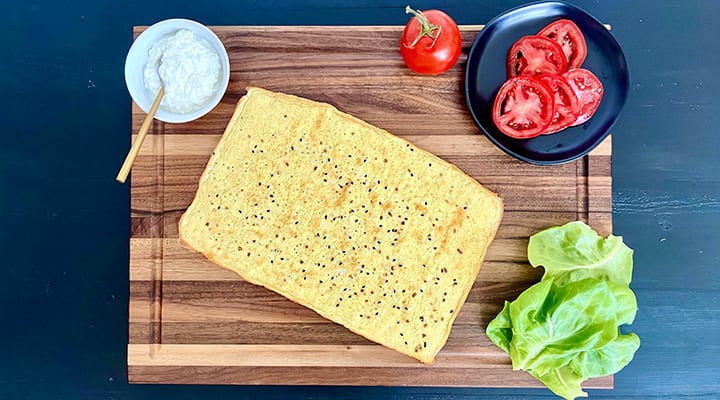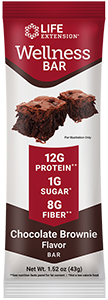
High-Protein Cottage Cheese Bread
Published: September 2024
Cottage cheese is making a major comeback, and it's no surprise why! This high-protein dairy staple is not only packed with nutritional benefits but also incredibly versatile. Whether you're rediscovering this classic favorite or trying it for the first time, cottage cheese is showing up in everything from breakfast bowls and savory dishes to desserts—and it's here to stay.
You can even turn cottage cheese into a delicious low-carb, high-protein bread in about 30 minutes with just a few simple ingredients. This flatbread is a fantastic alternative to traditional bread and is a nutritious option for anyone looking to add more protein and calcium to their diet.
Why you'll love this flatbread recipe
High in protein
: One serving of this flatbread is packed with 17 grams of protein, thanks to the combination of cottage cheese and eggs.Low in carbs
: It's a great option for low-carb diets, offering a lighter alternative to traditional bread, and is gluten free if you use seasonings without gluten.Easy to make
: Simple ingredients and quick prep make this recipe perfect for beginners or anyone short on time.Versatile
: It's perfect for a quick snack or as a healthy base for your favorite sandwich or pizza toppings.
Cottage Cheese Bread Recipe
Ingredients
1 cup cottage cheese (full fat or 2%)
2 eggs
½ teaspoon garlic powder
½ teaspoon Italian seasoning
Optional: Sesame seeds or Trader Joe's Everything but the Bagel seasoning
Preparation
Preheat oven to 350°F. Line a quarter sheet pan (13 x 9 inches) with parchment paper. Note: This is smaller than a traditional sheet pan.
Add cottage cheese, eggs, garlic powder, and Italian seasoning to a blender and blend until smooth. Pour the mixture onto the prepared baking sheet and spread it out evenly. Sprinkle sesame seeds or Trader Joe's Everything but the Bagel seasoning on top, if desired.
Bake in the oven until cooked and golden brown, 30-35 minutes. Remove from oven and let cool. Enjoy the bread on its own or use it to make sandwiches with tomatoes, chopped avocado, lettuce and protein. You can also use it as a base to make pizza.
Tip for Success
Want to vary it up? Next time, try using dill and onion powder instead of Italian seasoning and garlic powder for a taste twist.
Nutritional values per serving
Serving size: ½ flatbread (using full fat cottage cheese)
Calories: 168
Carbohydrates: 5 g
Protein: 17 g
Fat: 9 g
Saturated Fat: 3 g
Calcium: 128 mg
Sodium: 393 mg
Potassium: 183 mg
Fiber: 0.4 g
Sugar: 3 g
All nutritional information is based on third-party calculations and is only an estimate. Each recipe and nutritional value will vary depending on the brands you use, measuring methods and portion sizes.
Explore Our Best Protein Supplements
Is cottage cheese bread healthy?
This cottage cheese bread is a healthy alternative to traditional bread, especially if you're looking to boost your protein intake. This recipe uses simple ingredients and skips refined flours, so it's a healthier option than many store-bought breads, which can be high in preservatives, sugar and unhealthy fats. When paired with nutritious sandwich fillings like colorful vegetables, tomatoes and lean proteins, this bread is part of a well-rounded and balanced meal.
Cottage cheese is a powerhouse of nutrition. Besides being high in protein, it's also rich in calcium, phosphorus and other essential nutrients that support bone health, muscle function and overall wellness.
Eggs are also dietary superstars, offering a high-quality source of protein and essential nutrients like vitamins B12, D and A. They're one of the best dietary sources of choline, which is important for brain health, and they contain antioxidants like lutein and zeaxanthin, which support eye health.
The benefits of protein
Protein is essential for countless vital functions in the body.
Support muscle growth and repair
: Protein is important for muscle synthesis and recovery, making it a key nutrient for anyone who is active or looking to build lean muscle. And did you know a 3-5% muscle loss is associated with each decade we age after 30? Getting an adequate amount of protein in our diets can help offset this age-related muscle loss.Enhance satiety
: Protein takes longer to digest than carbs, so it keeps you fuller for longer, and helps to reduce cravings.Encourage weight management
: A high-protein diet can aid healthy weight management by boosting metabolism and maintaining lean muscle mass, which in turn keeps your metabolic rate up.Promote vital bodily functions
: Protein helps build and repair tissues, produce important enzymes and hormones, and support your immune system.
How Much Protein Do You Need?
The amount of protein you need varies based on factors like your age, your gender, how active you are, and your overall health status.
The official Dietary Guidelines recommend about 0.8 grams of protein per kilogram of body weight per day for most adults. However, these guidelines represent the minimum protein intake required to prevent a deficiency of protein, not the recommended intake.Recent research suggests that we may need much higher amounts of protein for optimal health. This is especially true for certain groups like athletes and older adults, who may have increased protein needs.
How to add more protein into your diet
The best way to add more protein to your diet is to incorporate a wide variety of protein-rich foods. Here are four strategies to maximize your intake:
1. Incorporate protein at every meal
It's common for people to load up on protein at dinner while skimping on it earlier in the day. However, spreading your protein intake throughout the day is key for maximizing its benefits. Our bodies don't store proteins like they do carbs and fats. Instead, we need to consume protein throughout the day to ensure our bodies have a steady supply. Incorporating protein-rich foods into each meal will help sustain muscle protein synthesis and keep you feeling full and satisfied throughout the day.
Try starting your day with a high-protein, high-fiber breakfast, such as chia seed pudding or avocado and egg toast. For lunch or dinner, enjoy a filling high-protein salad, and include lean proteins like chicken, fish or tofu.
2. Choose high-protein snacks
Swap out carb-heavy treats for protein-rich options like Greek yogurt, protein bars or this cottage cheese flatbread. Here are some examples of nutritious snacks that contain about 10-12 grams of protein:
- Half a cup of cottage cheese
- ¾ cup of Greek yogurt with strawberries or blueberries
- 2 boiled eggs
- ¼ cup almonds plus a small piece of cheese
- 2 tablespoons of peanut butter on a slice of whole-grain toast
- A protein bar
- Half a cup of shelled edamame
- 3 slices of deli turkey breast
- ⅓ cup hummus with a handful of sliced cucumber or bell pepper
3. Experiment with high-protein recipes
Remember, eating more protein doesn't necessarily mean eating more meat. There are plenty of high-quality vegetarian sources of protein, and you want to include a wide variety in your diet. Have fun trying new recipes with ingredients like tempeh, lentils, tofu, edamame and nutritional yeast.
4. Supplement with protein powder
A high-quality protein powder is a versatile and convenient way to help fill in any gaps in your diet. Protein powder can be incorporated into a wide variety of recipes, such as smoothies, oatmeal or even baked goods, to help make it easier to meet your daily protein needs.
Looking for other nutrients to support an active lifestyle? Our health needs quiz can give you a personal supplement recommendation.
References
- Paddon-Jones D, Rasmussen BB. "Dietary protein recommendations and the prevention of sarcopenia." Curr Opin Clin Nutr Metab Care. January 2009. https://www.ncbi.nlm.nih.gov/pmc/articles/PMC2760315/
- Voulgaridou G, et al. "Increasing Muscle Mass in Elders through Diet and Exercise: A Literature Review of Recent RCTs." Foods. March 2023. https://pubmed.ncbi.nlm.nih.gov/36981144/
- Weiler M, et al. "Is It Time to Reconsider the U.S. Recommendations for Dietary Protein and Amino Acid Intake?" Nutrients. February 2023. https://www.ncbi.nlm.nih.gov/pmc/articles/PMC9963165/
- Dietary Guidelines for Americans, 2020-2025. U.S. Departments of Agriculture and Health and Human Services. https://www.dietaryguidelines.gov/sites/default/files/2020-12/Dietary_Guidelines_for_Americans_2020-2025.pdf
Always be in the know!
Access the latest deals, wellness news, expert health tips & more!










